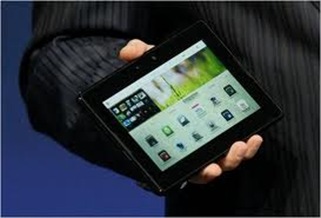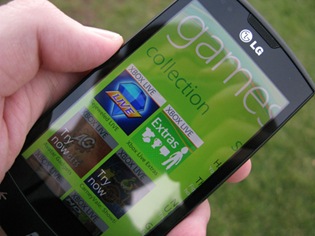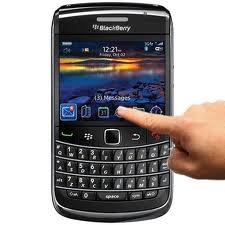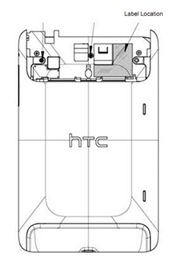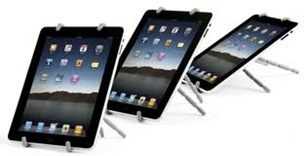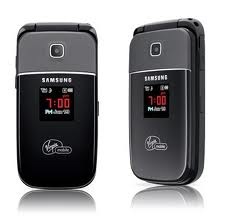 The Acer Iconia Tab A500 is the latest in the ongoing parade of Android 3.0 tablets, and with a price that undercuts Apple's iPad 2 by $50, the $450 Iconia Tab (price as of 4/23/2011) distinguishes itself in a crowded field. This tablet earns props for its many strengths, such as its inclusion of both a USB port and a microSD Card slot, its support for Dolby Mobile audio, and its custom home screen widgets that help organize applications. However, while the Iconia Tab goes far toward the goal of replacing a laptop, it still falls short--in part due to its own hardware constraints, and in part due to its software.
The Acer Iconia Tab A500 is the latest in the ongoing parade of Android 3.0 tablets, and with a price that undercuts Apple's iPad 2 by $50, the $450 Iconia Tab (price as of 4/23/2011) distinguishes itself in a crowded field. This tablet earns props for its many strengths, such as its inclusion of both a USB port and a microSD Card slot, its support for Dolby Mobile audio, and its custom home screen widgets that help organize applications. However, while the Iconia Tab goes far toward the goal of replacing a laptop, it still falls short--in part due to its own hardware constraints, and in part due to its software.
The Iconia Tab A500 is the largest of the three tablets that Acer has already introduced. The model tested here is Wi-Fi-only and carries the designation A500-10S16u. A 3G-enabled version is coming on AT&T.
Stylish Design
The elegant, two-tone Iconia Tab is one of the bulkier tablets available today. The 10.1-inch multitouch display has a black bezel, plus rounded silver edges and backing made of brushed aluminum. The screen is hardly oleophobic, but then, none of the tablets I've seen so far can actually do effective battle against the fingerprint monsters.
Despite its heft, the Iconia Tab felt surprisingly good in my hands. It's slightly longer and wider than the Motorola Xoom, measuring 10.2 by 7.0 by 0.5 inches, to the Xoom's 9.8 by 6.6 by 0.5 inches.
It is also slightly heavier than the Xoom: 1.7 pounds to the Xoom's 1.6 (to be precise, on the PCWorld Labs scale, the Iconia Tab weighed just 0.05 pound more, at 1.66 pounds to the Xoom's 1.61, though Acer lists its weight at 1.69 pounds). Still, the Iconia Tab actually gave me the perception of being lighter than the Xoom when I held it in hand. I tried the two side-by-side, and consistently preferred the overall balance and weighting of the Iconia Tab to the Xoom's. Neither tablet is something I'd want to hold in one hand for any extended period of time, but of the two, I'd give the Iconia Tab the nod. If weight were out of the equation, I'd even prefer the Iconia Tab to Apple's iPad 2; while the iPad 2, at 1.3 pounds, is the lightest of the three, its 7.3-inch width makes it less conducive for holding in vertical orientation and typing with two hands.
The tablet feels solidly made in other ways. The buttons and ports are all logically situated. The volume rocker and the rotation lock running along the right edge near the top are distinctively contoured and easy to press. Likewise, the power/sleep button is easily found at the upper right corner, and conveniently glows an unobtrusive, alternating red and white while charging. Even the flap that pulls out of the right side to reveal the microSDHC card slot (and the SIM card slot on other models in the A500 series that support 3G) feels sturdy.
The Iconia Tab Inside and Out
In its core specs, the Iconia Tab mirrors the Motorola Xoom. It runs a 1GHz Nvidia Tegra 250 dual-core processor and has 1GB of RAM. It also has a 10.1-inch, 1280-by-800 pixel display with a 16:10 aspect ratio (great for high-definition content); 16GB of internal eMMC storage (the Xoom has 32GB); and a microSDHC card for up to 32GB of additional storage.
A drawback is how the internal eMMC storage is configured: In some of the file manager apps I downloaded, including the popular Astro File Manager, the memory is seen as being SD card storage, which makes it confusing to tell the difference between internal storage and actual external storage.
The display looks good--both bright and colorful--most of the time, and the angle of view is adequate (but not terrific--just 80 degrees according to Acer's own specs), but I had a couple of issues. First, a grid is quite visible on the display. Acer says that the grid should be visible only at specific angles, and that it's there because of the touchscreen technology the company uses; I say it's visible all the time, at any angle, and the cross-hatch effect is very disruptive and distracting. It seems to cheapen the high-res screen and makes it harder to enjoy photos and read text (large text sizes and certain fonts help mitigate this feeling). As for photos, color quality varied depending on the app I viewed the images in; the default Android 3.0 experience left me feeling that this screen was better than those of the Xoom and the T-Mobile G-Slate, but it still lacks the natural skin tones and color balance of the Apple iPad 2's display.
The broad-reaching specs also include an accelerometer, a gyroscope, GPS, and a compass. It has Bluetooth 2.1 and 802.11 a/b/g/n Wi-Fi connectivity. The Iconia Tab uses Acer's Clear.fi branding for its DLNA media server support, and a Clear.fi app helps facilitate connecting the tablet to other DLNA sources; but I ended up using it as another way to view my multimedia on the tablet, and had problems sharing the content and grabbing content from other sources.
When held in the landscape orientation, the tablet has its power and headphone jacks at the left edge, toward the top; Micro-HDMI output along the left edge, at the bottom; and a micro-USB port for tethered data transfers and a USB-A port at the lower right edge. Along the top is the flap protecting the microSDHC card slot, and at bottom is the obtrusively bulky dock connector (the dock is an optional $80 accessory that includes an IR remote control).
The Iconia Tab is the first of the Android 3.0 tablets to ship with both a functioning card slot and a full USB-A host port that accepted a keyboard and all the external USB storage I threw at it, including USB flash drives, a USB media card reader, and even a portable hard drive. Having these ports is a huge boon, in light of tablets like the RIM BlackBerry PlayBook and the T-Mobile G-Slate, neither of which have a USB port, or even a microSD card slot.
Unfortunately, the USB port can only go so far, but how much use you get from the ports will be determined by what you're trying to do and what apps you're using. For example, I could get the Gallery and Acer's Photo Browser 3D app to display digital photos from external storage; but I couldn't get a preloaded trial version of Documents to Go to recognize the USB port, let alone access documents off a flash drive. Furthermore, Acer failed to include a file manager app for Android 3.0, and of the three apps I tried, none could access the USB flash drive.
The built-in cameras are, spec-wise, among the better tablet cameras: The Iconia Tab has a 5-megapixel rear-facing camera with flash, and a 2-megapixel front-facing camera (at the upper right corner, below where the power button sits) for video chat. But once again the hardware underperforms: The rear-facing camera's image quality is surprisingly mediocre; colors were off, and it was slow to focus. Given that this is the third Android 3.0 tablet where I've been dissatisfied with the camera quality, it's hard to tell if it's an Android 3.0 issue or the fault of the hardware.
If it's an Android 3.0 issue, it certainly wouldn't be the only one. As on other tablets running Google's OS, Android 3.0 is prone to crashes, and apps often don't work right, either. And the Gallery app continues to do a poor job rendering digital images, instead showing pictures that lack sharpness and detail.
The issues with image rendering and pixelated text I've observed on all three Android 3.0 tablets (Motorola Xoom, T-Mobile G-Slate, and now Acer Iconia Tab) make me increasingly wonder just how hard it is for Google's OS to properly render these elements. I found it interesting that Acer is the first to offer not one but two alternatives to the Android Gallery app to display images, but one of these (Nemo Player) introduces even more artifacting, and the other (Acer's homegrown Photo Browser 3D), while it shows better colors and slightly better sharpness, still can't approach the crisp clarity of a Samsung Galaxy Tab 7-inch, a RIM BlackBerry PlayBook, or even the Apple iPad 2.
Entertainment Features
For audio output, the Iconia Tab has stereo speakers, situated parallel to one another at the back of the tablet, in landscape mode. I found my hands could block the speakers, but I also had the choice of rotating the tablet so the speakers were situated at top, not bottom, as they would be if you hold it in landscape, with the front-facing camera at the upper left corner in this orientation.
This is the first tablet with Dolby Mobile audio built in, and the advantage that offers quickly became clear. The stereo speakers coupled with Dolby Mobile could translate into big sound, once you futz with the Dolby Mobile equalizer settings. And those settings are, annoyingly, buried in the general settings menu. At the standard settings, the audio sounded miserably tinny; once adjusted, music sounded reasonably good, given its source. I'd still prefer to pair up a Bluetooth speaker like the Aliph Jambox, but the stereo speakers still sounded superior to what I've heard on most other tablets; only RIM's BlackBerry PlayBook can best the Iconia Tab in audio quality.
While the device itself can play only 720p high-definition video, the Micro-HDMI port can output video at 1080p; but to get that quality, you'll have to wait for an over-the-air update due in the second quarter.
Acer says the tablet's two 3260mAh Li-polymer batteries will provide a total of 8 hours of game-play and movie-playback time, or 10 hours of Web browsing over Wi-Fi. We'll update this review with test results from the PCWorld Labs when they're available.
Software: A Light Custom Touch
Like the Motorola Xoom and T-Mobile G-Slate, the Iconia Tab supports Adobe Flash 10.2, but, as on the G-Slate, you'll have to follow a link in the Apps Menu to Flash's Android Market page to download and install the most recent version.
And since there's still no Android 3.0 version of Facebook, Acer's solution is to have a browser link to Facebook, right in the Apps menu. At least Acer calls it a link to Facebook, unlike RIM's approach on the BlackBerry PlayBook (which has app icons for Facebook and other Web services, when those are really just browser links).
Android 3.0 has a lot to like amid its shiny veneer. However, as on the other tablets, the OS has issues once you dig deep and really start using it. That, coupled with the lack of selection of tablet-optimized apps, makes for a limiting experience at this time.
While nothing about this install of Android 3.0 stands out, I appreciated Acer's efforts to customize the Android 3.0 experience.
Instead of wholly replacing the Android 3.0 interface, Acer instead provides its own widgets that appear on the home screen as apps. Ereading, Games, Multimedia, and Social--each of these icons look just like any other app icon. But choose any of them, and you'll find yourself in a bookshelf-style screen with a page for each of these categories. You move among the categories by tapping the left or right arrows at the bottom. And in the main screen of each category are app shortcuts to related content.
Acer kindly gets us started in the eReading section by showing Google Books and the company's LumiRead app, which can read PDFs and ePubs you transfer to the device, but is intended for downloading content in countries where Acer has agreements with publishers (for now, the U.S. market is not one of those). The Social section has SocialJogger, a variant on the SocialJogger software seen in the Acer Iconia notebook, with hooks into Facebook and Twitter; it also has a link to Facebook's home page in the Web browser, and a link to Google Talk.
The Multimedia section is prepopulated with links to Photo Browser 3D (Acer's own app for viewing photos), NemoPlayer (customized by Acer for photos, videos, and music), MusicA, Aupeo!, YouTube, and Clear.fi. And the Game Zone links to the included versions of the games Need for Speed: Shift and Let's Golf. Ready to add apps to any of these pages? Simply tap the big "+" symbol in the upper right, and select the apps you want from among your installed apps.
My experience with the Acer Iconia Tab A500 is mixed, to be sure. As a tablet, the device comes the closest I've seen yet to fulfilling the potential for a tablet--with any operating system--to replace a laptop. It's a great choice if you want the ability to access your content via USB sources, but the current limitations of Android 3.0 and what you can do with that content via USB, coupled with this tablet's display quirks, still make it a qualified recommendation.
If you're set on buying an Android tablet today, the Iconia Tab is one of the best bets at this writing--it tops the Xoom in functionality, and its $450 price is significantly cheaper than the $750 no-contract price of the G-Slate. The Iconia Tab is no iPad-killer, but it does give hints of the power of Android's more open and flexible platform. While I found faults with the Iconia Tab itself, many of my gripes lie with Android 3.0; if Google could only fix that OS's issues and get the native app ecosystem jump-started, Android tablets might be on to something.
Pcworld
 The LG 47LW5600 more than holds its own in an increasingly competitive 3D TV field. For $1530 (as of April 10, 2011), this 47-inch, LED-backlit set delivers decent image quality, great connected-TV features, and a pleasurable passive-3D experience in an exceptionally eco-friendly package.
The LG 47LW5600 more than holds its own in an increasingly competitive 3D TV field. For $1530 (as of April 10, 2011), this 47-inch, LED-backlit set delivers decent image quality, great connected-TV features, and a pleasurable passive-3D experience in an exceptionally eco-friendly package. 





